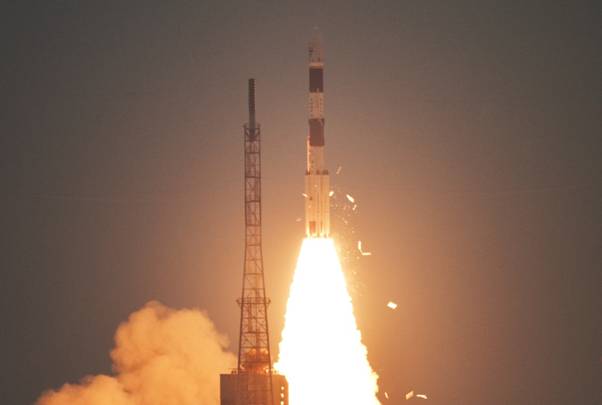
India’s Polar Satellite Launch Vehicle is currently in its 49th flight. During this flight, it launched Cartosat-3 along with 13 Nanosatellites of USA.
The initiative was done from the Satish Dhawan Space Centre (SDSC) SHAR, Sriharikota in the presence of about 5000 witnesses.
This was the 74th launch vehicle mission from SDSC SHAR, Sriharikota and 9th satellite of Cartosat series.
“Cartosat-3 is the most complex and advanced earth observation satellite built by ISRO.” Dr K Sivan, ISRO Chairman, said.
The Prime Minister, Shri Narendra Modi has congratulated the entire ISRO team on yet another successful launch of PSLV-C47 carrying indigenous Cartosat-3 satellite and over a dozen nanosatellites of USA.
“I heartily congratulate the entire ISRO team on yet another successful launch of PSLV-C47 carrying indigenous Cartosat-3 satellite and over a dozen nanosatellites of USA.
The advanced Cartosat-3 will augment our high-resolution imaging capability. ISRO has once again made the nation proud”, the Prime Minister said.

PSLV-C47
A third-generation agile advanced satellite with high-resolution imaging capability, the Cartosat-3 has added much to India’s capabilities.
Polar Satellite Launch Vehicle, PSLV-C47, had lift off at 0928 on November 27. Within 18 minutes, Cartosat-3 was sent into a sun synchronous orbit of 509 km without any incident.
Thereafter 13 nanosatellites were also deployed into their appropriate orbits.
On disengaging and being launched into its orbit, Cartosat-3 deployed its solar arrays. With this, ISRO Telemetry Tracking and Command Network at Bengaluru successfully gained control of the satellite.
The command centre will oversee the satellite and manage it into complete operational configuration over the next few days.
Cartosat-3 will have a mission life of 5 years. India plans to use the Cartosat-3 to aid in rural resource and infrastructure development, coastal land use, land cover and also in large-scale urban planning.
ISRO Chairman Dr K Sivan congratulated and complimented the launch vehicle and satellite teams involved in the mission. He also acknowledged the support from the Indian Industry.
The Polar Satellite Launch Vehicle (PSLV) is an expendable medium-lift launch vehicle. The PSLV is the brainchild of the Indian Space Research Organisation (ISRO).
It was developed in 1993, had its first flight on September 20, 1993and was successful launched in October 1994. It gives India the capacity to launch Indian Remote Sensing (IRS) satellites into sun-synchronous orbits.
Additionally, PSLV has the ability to launch small size satellites into Geostationary Transfer Orbit (GTO).
PSLV is a reliable, versatile launch vehicle and has had 39 consecutively successful missions. During the 1994-2017 period, the vehicle has launched 48 Indian satellites and 209 satellites for international clients.
PSLV crucial payloads include India’s first lunar probe Chandrayaan-1, India’s first interplanetary mission, Mars Orbiter Mission (Mangalyaan) and India’s first space observatory, Astrosa.
















